
Lilith is a figure shrouded in mystery and steeped in various mythologies and folklore. In Mesopotamian myths, where she appears as a spirit in the form of lilû or lilîtu, she is often depicted as a winged female demon, associated with the night and seen as a harbinger of misfortune, particularly for pregnant women and infants.
Lilith in Jewish tradition
Jewish tradition presents a more complex picture of Lilith, where she is sometimes considered to be the first wife of Adam, created from the same earth as him, unlike Eve, who was created from Adam’s rib. This act of defiance marked her as a symbol of autonomy and resistance against patriarchal structures.
This narrative suggests that Lilith was created equal to Adam, but their partnership failed because she refused he refused to acknowledge that equality. Consequently, she left the Garden of Eden for the shadows and was replaced by Eve.
In Jewish texts, Lilith is first mentioned in the Alphabet of Ben Sira, an 8th-century satirical work, where she is depicted as Adam’s first wife who asserts her equality and refuses to be subservient, leading to her departure from Eden and transformation into a demonic figure. This narrative has been interpreted by some as a reflection of ancient views on gender roles and the dangers of female autonomy. In contrast, modern feminist interpretations have reclaimed Lilith as a symbol of female independence and strength, challenging traditional narratives that associate her with evil.
In Jewish mysticism, particularly within the Kabbalistic tradition, Lilith holds a prominent and complex role. She is often depicted as a powerful and rebellious demoness, embodying the spiritual aspects of darkness and unbridled freedom. Her narrative is deeply intertwined with themes of sexuality, power, and the subversion of the traditional roles assigned to women. The Zohar, a foundational work of Kabbalah, refers to Lilith as a seductive and dangerous force, contrasting her with the Shekhinah, the feminine aspect of God, representing the divine presence and purity. In the mystical tradition, she is also associated with the Qliphoth, the representation of evil or impure spiritual forces in Kabbalistic cosmology.
Contrasting Lilith and Eve
In addition, the roles of Lilith and Eve are often contrasted in Kabbalism to highlight different aspects of the human and divine experience. While Lilith is associated with the Qliphoth, representing the impure and chaotic forces in the universe, Eve is often linked to the Sephirot, embodying harmony, creation, and the divine presence in the material world. Lilith’s narrative in Kabbalah is marked by her initial equality with Adam, her subsequent refusal to be subordinate, and her eventual transformation into a symbol of seduction and danger. This contrasts with Eve, who is created from Adam’s rib and represents obedience, motherhood, and life within the boundaries set by the divine order.
Eve’s role in Kabbalistic symbolism extends to the Shekhinah, the feminine aspect of God, which is seen as a source of life and sanctity. In contrast, Lilith is often depicted as a disruptive force, challenging the established order and representing the darker aspects of the divine creation. The interplay between these two figures is reflective of the Kabbalistic themes of balance and duality, where both the pure and impure, the orderly and chaotic, are necessary components of existence.
Furthermore, the relationship between Lilith and Eve in Kabbalistic thought can be seen as a reflection of the struggle between the spiritual and the material, the sacred and the profane. Lilith’s refusal to return to the Garden of Eden and her association with Samael, an archangel often linked to severity and judgment, underscore her role as a complex figure who embodies the challenges of spiritual autonomy and the consequences of defying divine authority. Eve, on the other hand, is integral to the narrative of human fallibility and redemption, her actions within the Garden of Eden setting the stage for the human journey towards spiritual growth and enlightenment.
In essence, Lilith and Eve represent two paths within the Kabbalistic world-view: one that defies the divine plan and seeks independence at the cost of harmony, and another that adheres to the divine will, embracing the limitations and potential for growth within the structure of the created world. Their roles are not merely historical or mythological; they are symbolic expressions of the dynamic forces that shape the spiritual journey of humanity within the framework of Jewish mysticism.
Lilith in Christianity
In Christian traditions, Lilith’s story is less prominent but has been linked to themes of temptation and original sin, often without explicit scriptural basis. The lack of a clear canonical reference to Lilith in Christian texts has not prevented her from being a figure of speculation and theological debate, particularly in discussions about the origins of evil and the role of women in religious narratives.
Her story has been adopted by some as a means of exploring the feminine divine outside the traditional biblical narratives. She is sometimes linked to figures like Mary Magdalene, who herself is a subject of various interpretations and reimaginings, often reflecting the societal views on women who defy conventional expectations.
In some Christian folklore, she is sometimes conflated with the concept of succubi, demonic entities that seduce men in their sleep. This aligns with the broader theme of Lilith as a seductress and a disruptor of social and moral order.
Christianity, which emerged from Judaism, did not incorporate all elements of Jewish folklore into its doctrine. The reasons for this are multifaceted.
Firstly, the early Christian Church was engaged in defining orthodoxy and distinguishing itself from Judaism and pagan religions. In this process, certain beliefs and stories were adopted while others were left out or reinterpreted to fit the emerging Christian narrative. The story of Lilith may have been considered too closely tied to Jewish mysticism or too pagan-like for inclusion in Christian texts.
Secondly, the figure of Lilith does not appear in the Hebrew Bible, which is the shared scripture of both Judaism and Christianity. Since Christianity places significant emphasis on biblical canon, the absence of Lilith from these texts would contribute to her omission from Christian teachings.
Furthermore, the development of Christian thought was influenced by the cultural and philosophical contexts of the times. As Christianity spread through the Roman Empire, it encountered and assimilated various Greco-Roman philosophical ideas, which may not have had room for a figure like Lilith.
Lastly, the character of Lilith may have been at odds with the Christian view of creation and the role of women. Christianity traditionally emphasizes Eve as the first woman, created from Adam’s rib, and this narrative serves as a foundation for certain theological and social teachings. The introduction of a character like Lilith could complicate this narrative.
The Babylonian Talmud further elaborates on Lilith, depicting her as a figure who challenges the traditional roles assigned to women, and she is often associated with the supernatural and the preternatural.
The Sumerians depicted her as a malevolent goddess of the night, who would prey on pregnant women and infants. This portrayal is echoed in the Akkadian myths, where she is a figure of terror, a nocturnal demoness that embodies the primal fears of the ancient world.
The figure of Lilith evolved, especially during the Middle Ages in Jewish mysticism, where she took on the role of a seductive, yet malevolent, entity. The Alphabet of Sirach, an anonymous medieval text, further embellished her story, depicting her as a rebellious figure who coupled with the archangel Samael. This association with Samael, and her refusal to return to the Garden of Eden, cemented her reputation as a symbol of defiance and independence.
Lilith in Islam
The Islamic tradition also acknowledges Lilith, though her role and characteristics differ. She is often portrayed as a demoness, a common thread that ties together her portrayals across Jewish, Christian, and Islamic beliefs—the power to cause harm, particularly to children and women during childbirth.
In modern times, Lilith has undergone a feminist reevaluation, seen as a figure of empowerment, representing the struggle for equality and the rejection of subservient roles. This reinterpretation has found its way into various forms of media, literature, and art, where Lilith’s image is invoked to challenge traditional gender roles and to celebrate the complexity and depth of the feminine experience.
Lilith’s enduring enigma continues to captivate the imagination, serving as a canvas upon which the fears, desires, and struggles of a society are projected. Her multifaceted nature allows her to be a symbol of what is feared and revered, of independence and power, and of the untamed aspects of nature and the human psyche. As such, Lilith remains a potent symbol in contemporary spiritual and esoteric practices, reflecting the ongoing dialogue between the past and the present, the sacred and the profane, the known and the unknown.
Modern interpretations of Lilith
In modern interpretations, particularly within feminist discourse, Lilith has been reclaimed as a symbol of female empowerment, autonomy, and resistance to oppression. This contemporary view stands in stark contrast to her historical depictions as a demon and seductress, highlighting the evolving perceptions of Lilith through the ages.
The story of Lilith serves as a powerful example of how mythological figures can be adapted and reinterpreted across different cultures and eras. Her various incarnations—from a feared demoness to a champion of equality—reflect the shifting values and concerns of the societies that tell her tale. Lilith’s enduring legacy is a testament to the complex role that such mythic figures play in our collective consciousness, embodying the multifaceted nature of human fears, desires, and aspirations.
Contemporary literature continues to explore the character of Lilith, often delving into her mythological roots and reimagining her story through various lenses. One notable work is “Lilith” by Nikki Marmery, which presents Lilith as the heroine women have waited six thousand years for. In this feminist retelling, Lilith and Adam are equals in the Garden of Eden until Adam demands her submission. Refusing to be subjugated, Lilith is banished and watches as Eve is created to replace her. However, Lilith has tasted the fruit of the Tree of Knowledge and plans to restore balance to the world and reclaim her place in Paradise.
Another significant contribution is the poetry of Shivanee Ramlochan, whose work in “Everyone Knows I am a Haunting” touches on postcolonial and feminist themes. Ramlochan’s poems weave narratives of witness and resilience, using Lilith’s story as a thread that binds together experiences of suffering and strength among women and other marginalized groups.
The character of Lilith also appears in academic discussions and literary analyses, such as the article “Temptation of Legitimacy: Lilith’s Adoption and Adaption in Contemporary Feminist Spirituality and Their Meanings,” which explores Lilith’s role in modern feminist spirituality and how her story is adapted and adopted in contemporary contexts.
These works are part of a larger trend of re-examining traditional mythological figures like Lilith, reinterpreting their stories to reflect modern values and concerns, particularly those related to gender, power, and identity. Through such literary endeavours, Lilith’s character is continuously evolving, offering new perspectives and insights into this ancient and enigmatic figure. The ongoing fascination with Lilith in literature underscores the enduring power of myth and storytelling in addressing contemporary issues and exploring the depths of human experience.
The enduring legacy of Lilith both in religions, and her varying portrayals from demonic to liberating, underscores the ongoing struggle with the concept of equality. Her story reflects the historical and ongoing tensions between established authority and individual rights, particularly in the context of gender. Lilith’s narrative serves as a lens through which to examine the evolving understanding of what equality means and how it is applied within and beyond religious frameworks. Her figure continues to inspire dialogue and debate, illustrating that the quest for equality remains a vital and dynamic part of human discourse. The complexity of Lilith’s character invites us to consider the multifaceted nature of equality and the various ways it has been upheld, challenged, and reinterpreted throughout history and into the present day.

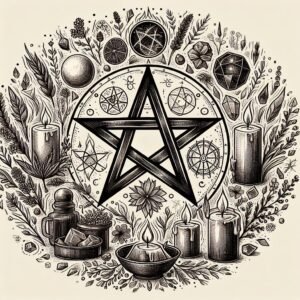

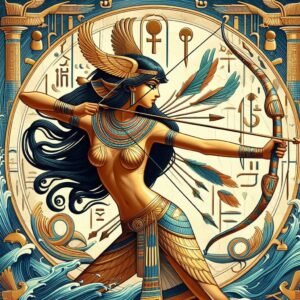

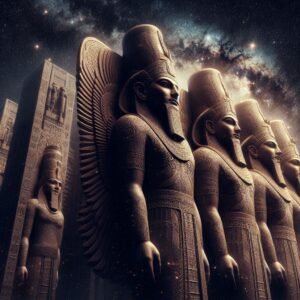
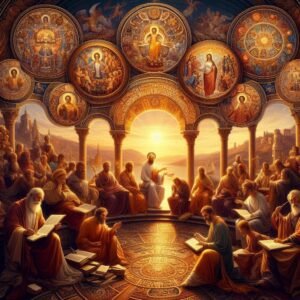
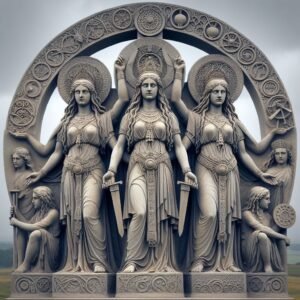

Truth of Self › Forums › The hidden role of Lilith and those other dark things
Tagged: babylonian, christianity, eve, Islam, Jewish, Judaism, lilith